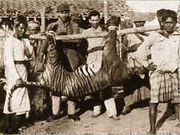Extinction
2008/9 Schools Wikipedia Selection. Related subjects: Biology; Environment
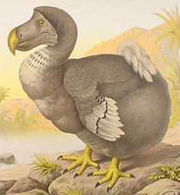
In biology and ecology, extinction is the cessation of existence of a species or group of taxa. The moment of extinction is generally considered to be the death of the last individual of that species (although the capacity to breed and recover may have been lost before this point). Because a species' potential range may be very large, determining this moment is difficult, and is usually done retrospectively. This difficulty leads to phenomena such as Lazarus taxa, where a species presumed extinct abruptly "re-appears" (typically in the fossil record) after a period of apparent absence.
Through evolution, new species arise through the process of speciation — where new varieties of organisms arise and thrive when they are able to find and exploit an ecological niche — and species become extinct when they are no longer able to survive in changing conditions or against superior competition. A typical species becomes extinct within 10 million years of its first appearance, although some species, called living fossils, survive virtually unchanged for hundreds of millions of years. Extinction, though, is usually a natural phenomenon; it is estimated that 99.9% of all species that have ever lived are now extinct.
Prior to the dispersion of humans across the earth, extinction generally occurred at a continuous low rate, mass extinctions being relatively rare events. Starting approximately 100,000 years ago, and coinciding with an increase in the numbers and range of humans, species extinctions have increased to a rate unprecedented since the Cretaceous–Tertiary extinction event. This is known as the Holocene extinction event and is at least the sixth such extinction event. Some experts have estimated that up to half of presently existing species may become extinct by 2100.
Definition
A species becomes extinct when the last existing member of that species dies. Extinction therefore becomes a certainty when there are no surviving individuals that are able to reproduce and create a new generation. A species may become functionally extinct when only a handful of individuals survive, which are unable to reproduce due to poor health, age, sparse distribution over a large range, a lack of individuals of both sexes (in sexually reproducing species), or other reasons.

Pinpointing the extinction (or pseudoextinction) of a species requires a clear definition of that species. If it is to be declared extinct, the species in question must be uniquely identifiable from any ancestor or daughter species, or from other closely related species. Extinction of a species (or replacement by a daughter species) plays a key role in the punctuated equilibrium hypothesis of Stephen Jay Gould and Niles Eldredge.
In ecology, extinction is often used informally to refer to local extinction, in which a species ceases to exist in the chosen area of study, but still exists elsewhere. This phenomenon is also known as extirpation. Local extinctions may be followed by a replacement of the species taken from other locations; wolf reintroduction is an example of this. Species which are not extinct are termed extant. Those that are extant but threatened by extinction are referred to as threatened or endangered species.
An important aspect of extinction at the present time are human attempts to preserve critically endangered species, which is reflected by the creation of the conservation status "Extinct in the Wild" (EW). Species listed under this status by the World Conservation Union (IUCN) are not known to have any living specimens in the wild, and are maintained only in zoos or other artificial environments. Some of these species are functionally extinct, as they are no longer part of their natural habitat and it is unlikely the species will ever be restored to the wild. When possible, modern zoological institutions attempt to maintain a viable population for species preservation and possible future reintroduction to the wild through use of carefully planned breeding programs.
The extinction of one species' wild population can have knock-on effects, causing further extinctions. These are also called "chains of extinction".
Pseudoextinction
Descendants may or may not exist for extinct species. Daughter species that evolve from a parent species carry on most of the parent species' genetic information, and even though the parent species may become extinct, the daughter species lives on. In other cases, species have produced no new variants, or none that are able to survive the parent species' extinction. Extinction of a parent species where daughter species or subspecies are still alive is also called pseudoextinction.
Pseudoextinction is difficult to demonstrate unless one has a strong chain of evidence linking a living species to members of a pre-existing species. For example, it is sometimes claimed that the extinct Hyracotherium, which was an ancient animal similar to the horse, is pseudoextinct, rather than extinct, because there are several extant species of equus, including zebra and donkeys. However, as fossil species typically leave no genetic material behind, it is not possible to say whether Hyracotherium actually evolved into more modern horse species or simply evolved from a common ancestor with modern horses. Pseudoextinction is much easier to demonstrate for larger taxonomic groups. It is said that dinosaurs are pseudoextinct, because some of their descendants, the birds, survive today.
Causes
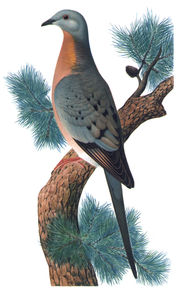
There are a variety of causes that can contribute directly or indirectly to the extinction of a species or group of species. "Just as each species is unique," write Beverly and Stephen Stearns, "so is each extinction... the causes for each are varied — some subtle and complex, others obvious and simple". Most simply, any species that is unable to survive or reproduce in its environment, and unable to move to a new environment where it can do so, dies out and becomes extinct. Extinction of a species may come suddenly when an otherwise healthy species is wiped out completely, as when toxic pollution renders its entire habitat unlivable; or may occur gradually over thousands or millions of years, such as when a species gradually loses out in competition for food to better adapted competitors.
Assessing the relative importance of genetic factors compared to environmental ones as the causes of extinction has been compared to the nature-nurture debate. The question of whether more extinctions in the fossil record have been caused by evolution or by catastrophe is a subject of discussion; Mark Newman, the author of Modeling Extinction argues for a mathematical model that falls between the two positions. By contrast, conservation biology uses the extinction vortex model to classify extinctions by cause. When concerns about human extinction have been raised, for example in Sir Martin Rees' 2003 book Our Final Hour, those concerns lie with the effects of climate change or technological disaster.
Currently, environmental groups and some governments are concerned with the extinction of species caused by humanity, and are attempting to combat further extinctions through a variety of conservation programs. Humans can cause extinction of a species through overharvesting, pollution, habitat destruction, introduction of new predators and food competitors, overhunting, and other influences. According to the World Conservation Union (WCU, also known as IUCN), 784 extinctions have been recorded since the year 1500, the arbitrary date selected to define "modern" extinctions, with many more likely to have gone unnoticed.
Genetics and demographic phenomena
Population genetics and demographic phenomena affect the evolution, and therefore the risk of extinction, of species. Species with small populations are much more vulnerable to these types of effects. Limited geographic range is the most important determinant of genus extinction at background rates but becomes increasingly irrelevant as mass extinction arises.
Natural selection acts to propagate beneficial genetic traits and eliminate weaknesses. It is nevertheless possible for a deleterious mutation to be spread throughout a population through the effect of genetic drift.
A diverse or "deep" gene pool gives a population a higher chance of surviving an adverse change in conditions. Effects that cause or reward a loss in genetic diversity can increase the chances of extinction of a species. Population bottlenecks can dramatically reduce genetic diversity by severely limiting the number of reproducing individuals and make inbreeding more frequent. The founder effect can cause rapid, individual-based speciation and is the most dramatic example of a population bottleneck.
Genetic pollution
Purebred naturally evolved region specific wild species can be threatened with extinction in a big way through the process of Genetic Pollution i.e. uncontrolled hybridization, introgression and Genetic swaping which leads to homogenization or replacement of local genotypes as a result of either a numerical and/or fitness advantage of introduced plant or animal. Nonnative species can bring about a form of extinction of native plants and animals by hybridization and introgression either through purposeful introduction by humans or through habitat modification, bringing previously isolated species into contact. These phenomena can be especially detrimental for rare species coming into contact with more abundant ones where the abundant ones can interbreed with them swamping the entire rarer gene pool creating hybrids thus driving the entire original purebred native stock to complete extinction. Such extinctions are not always apparent from morphological (outward appearance) observations alone. Some degree of gene flow may be a normal, evolutionarily constructive process, and all constellations of genes and genotypes cannot be preserved however, hybridization with or without introgression may, nevertheless, threaten a rare species' existence.
Widespread genetic pollution also leads to weakening of the naturally evolved (wild) region specific gene pool leading to weaker hybrid animals and plants which are not able to cope with natural environs over the long run and fast tracks them towards final extinction.
The gene pool of a species or a population is the complete set of unique alleles that would be found by inspecting the genetic material of every living member of that species or population. A large gene pool indicates extensive genetic diversity, which is associated with robust populations that can survive bouts of intense selection. Meanwhile, low genetic diversity (see inbreeding and population bottlenecks) can cause reduced biological fitness and an increased chance of extinction amongst the reducing population of purebred individuals from a species.
Habitat degradation
The degradation of a species' habitat may alter the fitness landscape to such an extent that the species is no longer able to survive and becomes extinct. This may occur by direct effects, such as the environment becoming toxic, or indirectly, by limiting a species' ability to compete effectively for diminished resources or against new competitor species.
Habitat degradation through toxicity can kill off a species very rapidly, by killing all living members through contamination or sterilizing them. It can also occur over longer periods at lower toxicity levels by affecting life span, reproductive capacity, or competitiveness.
Habitat degradation can also take the form of a physical destruction of niche habitats. The widespread destruction of tropical rainforests and replacement with open pastureland is widely cited as an example of this; elimination of the dense forest eliminated the infrastructure needed by many species to survive. For example, a fern that depends on dense shade for protection from direct sunlight can no longer survive without forest to shelter it. Another example is the destruction of ocean floors by bottom trawling.
Diminished resources or introduction of new competitor species also often accompany habitat degradation. Global warming has allowed some species to expand their range, bringing unwelcome competition to other species that previously occupied that area. Sometimes these new competitors are predators and directly affect prey species, while at other times they may merely outcompete vulnerable species for limited resources. Vital resources including water and food can also be limited during habitat degradation, leading to extinction.
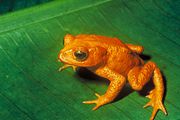
Predation, competition, and disease
Humans have been transporting animals and plants from one part of the world to another for thousands of years, sometimes deliberately (e.g., livestock released by sailors onto islands as a source of food) and sometimes accidentally (e.g., rats escaping from boats). In most cases, such introductions are unsuccessful, but when they do become established as an invasive alien species, the consequences can be catastrophic. Invasive alien species can affect native species directly by eating them, competing with them, and introducing pathogens or parasites that sicken or kill them or, indirectly, by destroying or degrading their habitat. Human populations may themselves act as invasive predators. According to the "overkill hypothesis", the swift extinction of the megafauna in areas such as New Zealand, Australia, Madagascar and Hawaii resulted from the sudden introduction of human beings to environments full of animals that had never seen them before, and were therefore completely unadapted to their predation techniques.
Coextinction
Coextinction refers to the loss of a species due to the extinction of another; for example, the extinction of parasitic insects following the loss of their hosts. Coextinction can also occur when a species loses its pollinator, or to predators in a food chain who lose their prey. "Species coextinction is a manifestation of the interconnectedness of organisms in complex ecosystems ... While coextinction may not be the most important cause of species extinctions, it is certainly an insidious one".
Mass extinctions
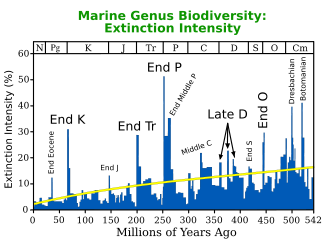
There have been at least five mass extinctions in the history of life, and four in the last 3.5 billion years in which many species have disappeared in a relatively short period of geological time. The most recent of these, the Cretaceous–Tertiary extinction event 65 million years ago at the end of the Cretaceous period, is best known for having wiped out the non-avian dinosaurs, among many other species.
Modern mass extinction
According to a 1998 survey of 400 biologists conducted by New York's American Museum of Natural History, nearly 70 percent believed that they were currently in the early stages of a human-caused mass extinction, known as the Holocene extinction event. In that survey, the same proportion of respondents agreed with the prediction that up to 20 percent of all living populations could become extinct within 30 years (by 2028). Biologist E. O. Wilson estimated in 2002 that if current rates of human destruction of the biosphere continue, one-half of all species of life on earth will be extinct in 100 years. More significantly the rate of species extinctions at present is estimated at 100 to 1000 times "background" or average extinction rates in the evolutionary time scale of planet Earth.
History of scientific understanding
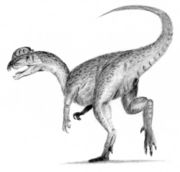
In the 1800s when extinction was first described, the idea of extinction was threatening to those who held a belief in the Great Chain of Being, a theological position that did not allow for "missing links".
The possibility of extinction was not widely accepted before the 1800s. The devoted naturalist Carl Linnaeus, could "hardly entertain" the idea that humans could cause the extinction of a species. When parts of the world had not been thoroughly examined and charted, scientists could not rule out that animals found only in the fossil record were not simply "hiding" in unexplored regions of the Earth. Georges Cuvier is credited with establishing extinction as a fact in a 1796 lecture to the French Institute. Cuvier's observations of fossil bones convinced him that they did not originate in extant animals. This discovery was critical for the spread of uniformitarianism, and lead to the first book publicizing the idea of evolution though Cuvier himself strongly opposed the theories of evolution advanced by Lamarck and others.
Human attitudes and interests
Extinction is an important research topic in the field of zoology, and biology in general, and has also become an area of concern outside the scientific community. A number of organizations, such as the Worldwide Fund for Nature, have been created with the goal of preserving species from extinction. Governments have attempted, through enacting laws, to avoid habitat destruction, agricultural over-harvesting, and pollution. While many human-caused extinctions have been accidental, humans have also engaged in the deliberate destruction of some species, such as dangerous viruses, and the extirpation of other problematic species has been suggested.
Biologist Bruce Walsh of the University of Arizona states three reasons for scientific interest in the preservation of species; genetic resources, ecosystem stability, and ethics; and today the scientific community "stress[es] the importance" of maintaining biodiversity.
In modern times, commercial and industrial interests often have to contend with the effects of production on plant and animal life. However, some technologies with minimal, or no, proven harmful effects on Homo sapiens can be devastating to wildlife (for example, DDT). Biogeographer Jared Diamond notes that while big business may label environmental concerns as "exaggerated", and often cause "devastating damage", some corporations find it in their interest to adopt good conservation practices, and even engage in preservation efforts that surpass those taken by national parks.
Governments sometimes see the loss of native species as a loss to ecotourism, and can enact laws with severe punishment against the trade in native species in an effort to prevent extinction in the wild. Nature preserves are created by governments as a means to provide continuing habitats to species crowded by human expansion. The 1992 Convention on Biological Diversity has resulted in international Biodiversity Action Plan programmes, which attempt to provide comprehensive guidelines for government biodiversity conservation. Advocacy groups, such as The Wildlands Project and the Alliance for Zero Extinctions, work to educate the public and pressure governments into action.
People who live close to nature can be dependent on the survival of all the species in their environment, leaving them highly exposed to extinction risks. However, people prioritize day-to-day survival over species conservation; with human overpopulation in tropical developing countries, there has been enormous pressure on forests due to subsistence agriculture, including slash-and-burn agricultural techniques that can reduce endangered species's habitats.
Planned extinction
Humans have aggressively worked toward the extinction of many species of virus and bacterium in the cause of disease eradication. For example, the smallpox virus is now essentially extinct in the wild — although samples are retained in laboratory settings, and the polio virus is now confined to small parts of the world as a result of human efforts to cure the disease it causes.
Olivia Judson is one of six modern scientists to have advocated the deliberate extinction of specific species. Her September 25, 2003 New York Times article, "A Bug's Death", advocates "specicide" of thirty mosquito species through the introduction of a genetic element, capable of inserting itself into another crucial gene, to create a recessive " knockout genes". Her arguments for doing so are that the Anopheles mosquitoes (which spread malaria) and Aedes mosquitoes (which spread dengue fever, yellow fever, elephantiasis, and other diseases) represent only 30 species; eradicating these would save at least one million human lives per annum at a cost of reducing the genetic diversity of the family Culicidae by only 1%. She further argues that since species go extinct "all the time" the disappearance of a few more will not destroy the ecosystem: "We're not left with a wasteland every time a species vanishes. Removing one species sometimes causes shifts in the populations of other species - but different need not mean worse." In addition, anti-malarial and mosquito control programs offer little realistic hope to the 300 million people in developing nations who will be infected with acute illnesses this year; although trials are ongoing she writes that if they fail: "We should consider the ultimate swatting."
Cloning
While no extinct species has currently ever been recreated, recent technological advances have encouraged the hypothesis that using DNA from the remains of an extinct species, through the process of cloning, this species may be "brought back to life". Proposed targets for cloning include the mammoth, thylacine, and the dodo. As of now, scientists claim to have stopped pursuing the cloning of the thylacine. In order for such a program to succeed, a sufficient number of individuals would have to be cloned, from the DNA of different individuals (in the case of sexually reproducing organisms) to create a viable population. The cloning of an extinct species has not yet been attempted, primarily due to technological limitations, though bioethical and philosophical objections have also been raised. The concept of cloning extinct species was popularized in the successful novel and movie Jurassic Park.
